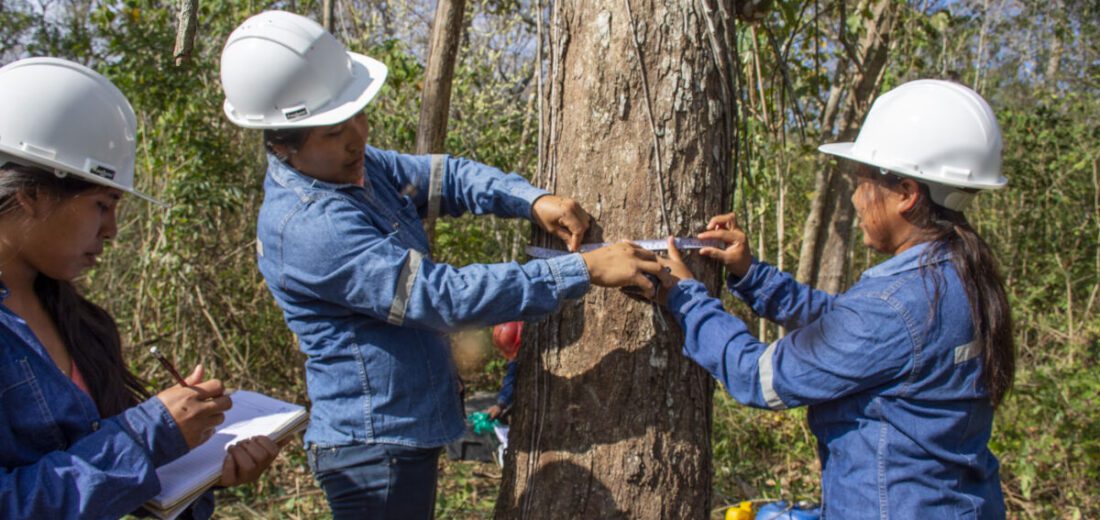
‘Listen to those who make it happen’
When local communities take charge of the forests they call home, both the people and the ecosystems benefit. This has become clear through the work of Tropenbos International, which supports locally owned solutions to forest management—especially in situations where the needs of forest dwellers might appear to conflict with conservation efforts.
In Bolivia’s tropical dry forests of Guarayos and Chiquitania, the steady roar of chainsaws might suggest deforestation. But the reality is more nuanced. These sounds often mark community-managed forestry operations, which are helping preserve the forest rather than destroy it.
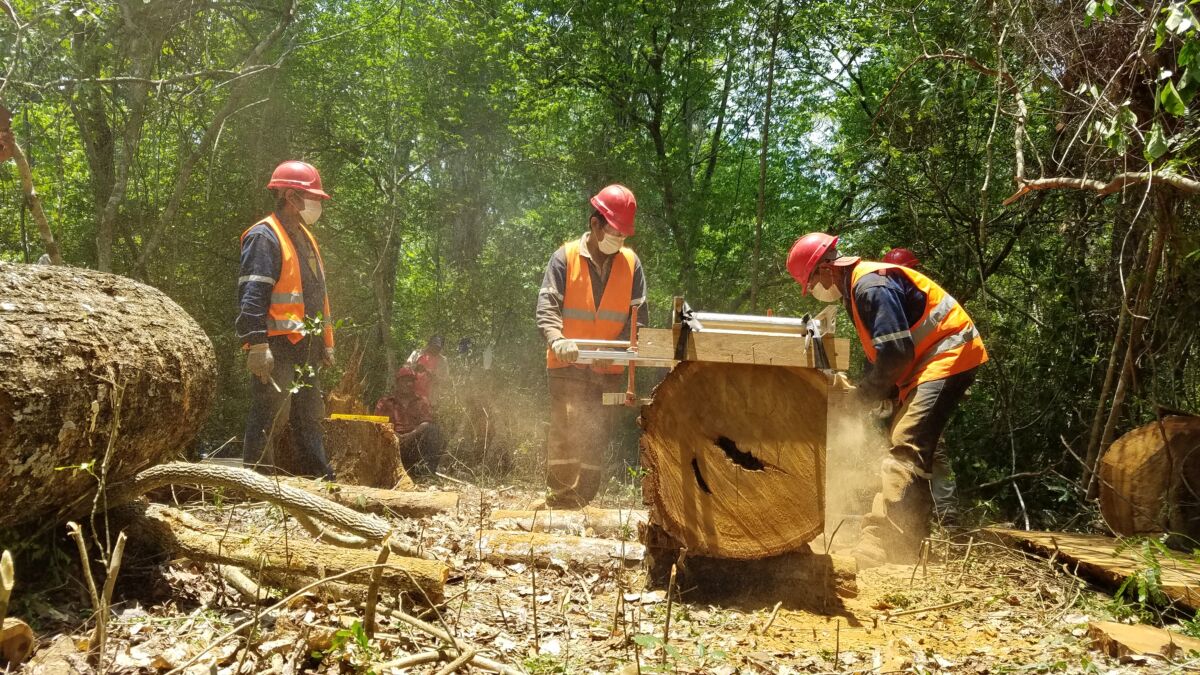
The Indigenous territories of the Guarayos and Chiquitanos stand as forested islands in a landscape increasingly dominated by cattle ranching and soy farming—two of the major drivers of deforestation. When Evo Morales, Bolivia’s first Indigenous president, took office in 2006, he prioritised land rights for Indigenous communities. As a result, more than twenty million hectares of land—five times the size of the Netherlands—were officially recognised as Indigenous territories.
However, making a living from the forest has long been a challenge for Bolivia’s Indigenous communities. They often lack the capital and equipment needed for large-scale logging operations—like those that drag massive trees between two tractors. At the same time, national forest laws historically prohibited smaller-scale harvesting, effectively sidelining Indigenous people from making use of the forests they stewarded.
That began to change thanks to advocacy efforts by local communities in collaboration with the Instituto Boliviano de Investigación Forestal (IBIF). Together, they pushed for—and succeeded in securing—legal reforms that now allow communities to obtain certification for low-impact logging. Under these new rules, communities are permitted to harvest trees and process them into planks directly in the forest using chainsaw milling.
This method has proved transformative. It triples the income that communities earn from forestry activities and significantly reduces the environmental impact of logging compared to industrial-scale methods.
‘This is one of our successes with locally owned solutions,’ says Nataly Ascarrunz Austin, Executive Director of IBIF, a partner of Tropenbos International. ‘When done in a controlled and certified way, it brings huge economic benefits to the community while also helping to preserve the forest. Forestry can now be a viable economic activity that competes with cattle ranching—the leading cause of deforestation in Bolivia.’
Exactly what they need
This example illustrates why locally owned solutions are at the core of Tropenbos International’s approach. From their office in Ede, the Netherlands, Anita van der Laan, advisor for Planning, Monitoring, Evaluation and Learning at Tropenbos, explains: ‘Locally led initiatives ensure that the support provided aligns with what the communities say they need.
‘As outsiders, we can facilitate the process to help them identify their needs and aspirations—but we cannot design the solutions for them.’ She continues: ‘Such initiatives build on local knowledge, traditions, and lived experience, and ensure community members are involved in every phase—from identifying needs to evaluating outcomes. In other words, ‘nothing about us without us.’’
Locally owned solutions significantly boost the chances of lasting success, especially when it comes to innovation, says André Brasser, an expert in collaborative learning associated with Tropenbos International. ‘There are tonnes of studies showing how critical local ownership is. If people are not genuinely engaged, their participation often ends the moment a project does,’ he explains.
‘You need to tailor project interventions to local opportunities and sensitivities. And local people are the ones best placed to lead that process—they are the experts in their own context. But that also means adopting a different, and often more complex, approach. That is something we have learned—and continue to learn.’
The stakes are especially high in the fight against deforestation, Brasser adds. ‘There are powerful vested interests—logging, mining, livestock farming, agro-industrial plantations, infrastructure development. These forces often prioritise profit over preservation. There is big money involved.’
In that context, he argues, it becomes even more urgent to empower and support communities that have a direct stake in keeping forests standing. ‘They are the ones who can offer the strongest counterbalance.’
These powerful vested interests are very much present in Bolivia’s forests. Soy farming and cattle ranching bring in large profits and are major drivers of deforestation in the country. That is why it is so significant that Indigenous communities now have access to chainsaw milling as part of their approved forest management plans, says Ascarrunz. This shift allows them to generate income in a way that can rival the profitability of cattle ranching.
Previously, forest management was in the hands of large-scale logging companies, which controlled the market and dictated the prices of harvested trees. Indigenous communities had little choice—they were often forced to lease out their land to commercial soy farmers or take up cattle ranching themselves, clearing forests in the process.
In recent decades, IBIF has collaborated with local communities to develop territorial management plans that promote sustainable forest use. The organisation employs local community members and works to build their capacity in forest management.
IBIF’s research has demonstrated that sustainable forestry is achievable when communities are permitted to harvest at small scales and add value to their timber—such as through chainsaw milling.
This evidence played a key role in persuading the government to amend an article in the national forest law. The change allows certified communities to carry out chainsaw milling within legally designated forest areas, as long as their forest management practices are certified.
Instead of extracting entire logs of valuable species, the trees are milled into planks directly on-site. ‘This leads to much less ecological damage than the large-scale logging that was common in the past,’ says Ascarrunz.
Wildfires
Another compelling example of locally led development is the prevention of wildfires in the Lomerio region, as shared by Ascarrunz. Wildfires have become an increasing threat due to climate change and prolonged droughts. Farmers and cattle ranchers often use fire to clear land—a practice that can quickly spiral into uncontrollable wildfires if not carefully managed.
In response to the devastating fires of 2019, the indigenous government of the Lomerio territory reached out to IBIF for support. Together, they established a technical unit tasked with creating a fire monitoring system. One of the key tools developed was a burn calendar, which outlines safe periods for land clearing and periods when burning is prohibited.
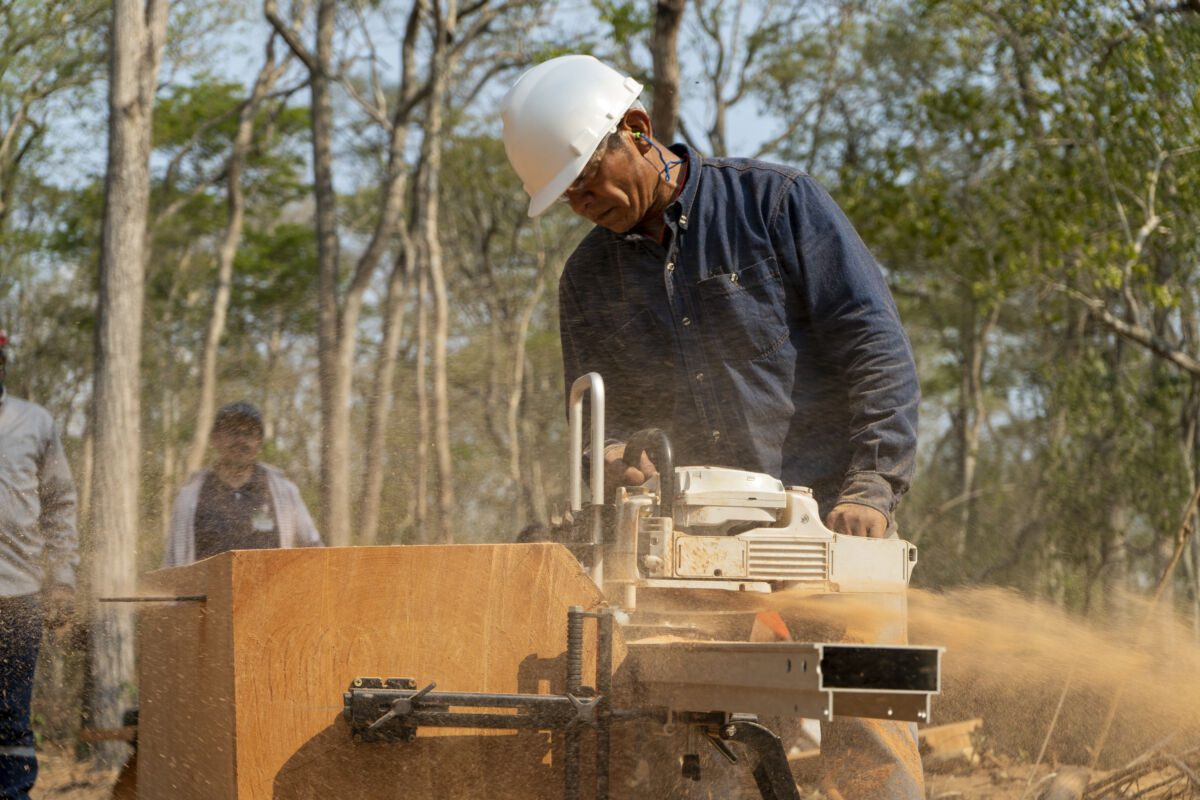
Volunteer community firefighters also play a crucial role. They actively monitor and report potential fire hazards and hotspots. The system they have built is not only functional at the local level—it has been adopted by the National Forest Service, which now uses it as a national standard.
‘Indigenous communities, farmers, and cattle ranchers all have a shared interest in preventing wildfires,’ says Ascarrunz. ‘This common ground brought them together and made success possible.’
‘Sometimes indigenous communities are seen as our saviours,’ Ascarrunz reflects. ‘We expect them to be completely sustainable—because we are not. We place the burden of protecting the forests on them as if they are responsible for saving humanity.’
But embracing locally owned solutions, she emphasises, means respecting the right of communities to self-determination—to make their own decisions about how to use their land and resources. ‘That may sometimes clash with our objectives,’ she says. ‘And when it does, you have to be willing to let go of the idea that you have all the answers.’
She recounts how the Lomerio community decided to clear a portion of their forest for agriculture and cattle ranching. ‘We could have chosen not to support that plan,’ Ascarrunz explains.
‘But instead, we worked with them to ensure that the land was used sustainably, through agroecological farming and agroforestry practices. We used to prioritise conservation above all else. Now, people come first. Because strong people make for strong forests.’
People First
‘People first—that is what it is about in the Democratic Republic of Congo (DRC) as well,’ says Charles Mpoyi, Coordinator of Monitoring, Evaluation and Learning & Communication at Tropenbos DRC, one of Tropenbos International’s key partners. Mpoyi is currently pursuing his PhD in Wageningen, the Netherlands.
‘We have worked with twelve communities in Bafwasende, a forested region in the centre of the DRC,’ Mpoyi explains. ‘Our focus is on supporting them through the long and complex process of obtaining legal recognition of their customary land rights.’
This process begins with formal acknowledgement by local authorities that a group constitutes a traditional forest community with customary rights. Once this is secured, the community can apply for legal land titles under the framework of community forestry.
‘These titles are permanent and can cover areas up to fifty thousand hectares,’ Mpoyi says. ‘Once a community holds legal title, they can use the forest according to a management plan they have created. That includes small-scale agriculture or hunting. However, mining is explicitly prohibited.’
To take charge of their forests, communities must form various committees and draw up a simple management plan outlining how they intend to use the forest. The local forest administration must then approve this plan. Collectively, the twelve communities now manage approximately 400,000 hectares of forest—roughly a tenth of the Netherlands’ land area.
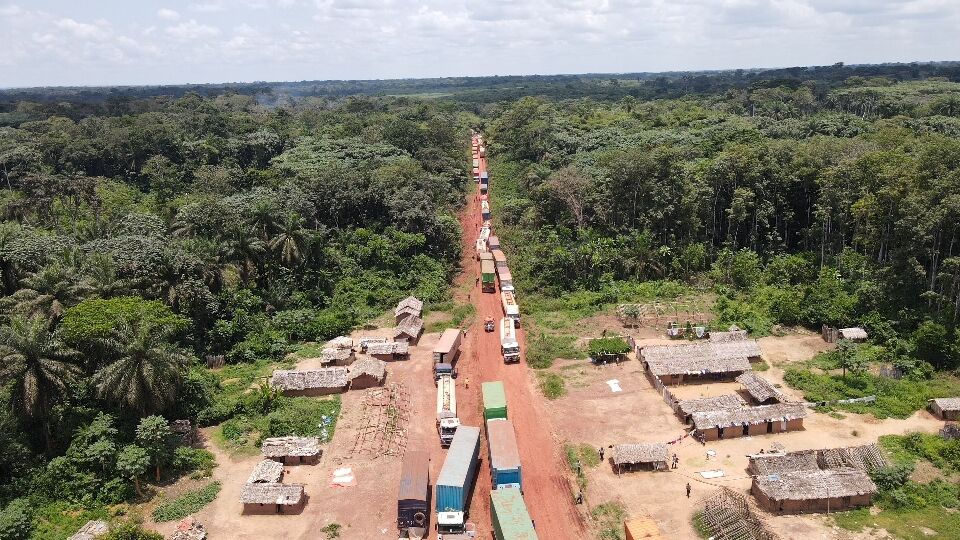
The motivation to protect these forests runs deep, says Mpoyi. ‘The communities have decided to conserve seventy percent of their forest land. They recognise the forest’s importance. It provides essential ecosystem services, a source of food through hunting and gathering, and even potential future income through the carbon credit market.
‘But more than that, the forest is sacred; it is the home of their spirits and ancestors.’ Tropenbos DRC’s role, he emphasises, is to stand beside the communities. ‘You can design a project and plant trees. But if the initiative does not originate from the people themselves, the trees will be cut down the moment the project ends. We see this time and again in other projects.’
But helping a community organise takes time and persistence, Mpoyi stresses. ‘You need a field team that actually lives with the community for a long period. If you live in town and just visit for a week, you will not truly understand what people want. You will not speak the right language—literally and culturally—and the community will not feel comfortable opening up to you or trusting you.’
Equally important is the mindset you bring. ‘Do not assume only the project staff know,’ Mpoyi says. ‘Community members hold valuable insights. They often understand things outsiders simply do not grasp. What counts as success and what ends in failure—they are the real experts.’
Dilemmas
But locally led development also comes with dilemmas. Community members do not always want the same things as outsiders—or even as the Tropenbos staff working alongside them. Yet it is precisely in these moments of friction that valuable new solutions can emerge, says Mpoyi.
One such example arose when Tropenbos DRC proposed growing cocoa through agroforestry by combining cocoa with other tree species. Research shows that shaded cocoa plants can yield better harvests. But the community had a different idea.
‘They only wanted to grow cocoa,’ Mpoyi explains. ‘They had seen migrants from Eastern DRC making good money from cocoa plantations combined with banana trees. The local community wanted that same success—just without the banana.’
Mpoyi: ‘In our conversations, we reached a shared understanding. The community realised they could learn a lot from the migrants’ cultivation methods. They became open to planting certain trees alongside cocoa—like fruit trees or trees that host edible caterpillars, which have economic value. The key in this process is that the community owns it.’
This example highlights why a locally led approach must be flexible. Mpoyi adds, ‘The community can make a plan and set a goal, but if circumstances change, they need the freedom to adjust it. Just like with cocoa cultivation—you have to be open to change and not push through your agenda as an organisation.’
The story from the DRC illustrates a key insight, reflects Roderick Zagt, head of programmes at Tropenbos International in Ede: communities never develop plans in complete isolation. ‘When someone in a village proposes an idea, it’s not necessarily the perfect answer,’ he says. ‘Innovation emerges through interaction with outsiders and by learning from one another.’
To foster this exchange, Tropenbos International organises collaborative learning sessions, creating spaces where people from diverse backgrounds and organisations openly share knowledge and learn together.
Voices of Women
A dilemma that often arises, says Anita van der Laan, is the exclusion of women from decision-making. ‘Women’s voices need to be heard because if we come up with something meant to benefit them while they are not at the table, there is a high chance it will not work. But in communities where women are traditionally excluded, how do we address this without imposing Western ideas about gender equity? That process also has to be locally led.’
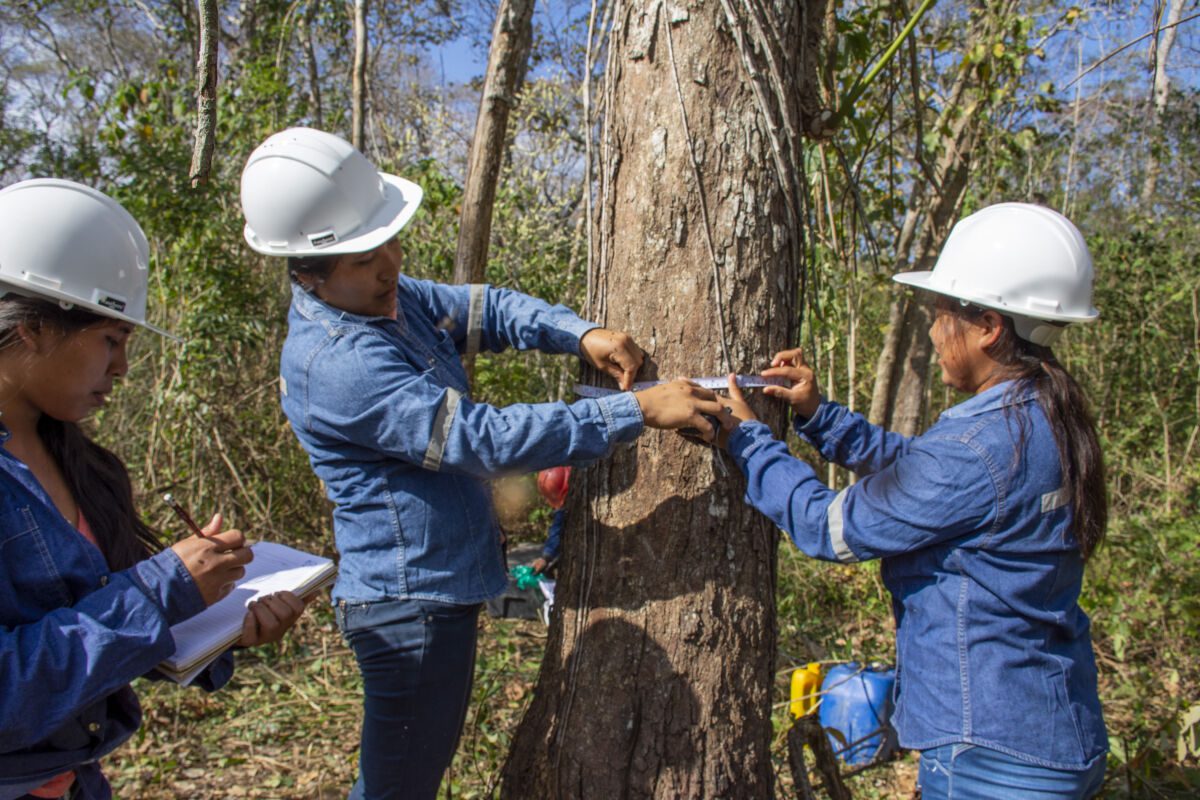
One approach comes from the DRC, where there was significant resistance to women’s participation in forest management discussions. Mpoyi explains: ‘In the community’s culture, women have few rights. They could not speak on equal terms with men about forest management. We invited women to meetings, but they stayed silent—it looked like they had no opinions.’
To address this, Tropenbos DRC organised a dedicated session for exchanging experiences and discussing how the community itself viewed women’s roles and participation.
It turned out that a few women in the community did hold leadership positions, even though local cultural norms officially did not allow it. Some were administrative leaders or customary chiefs. They were not many, but they existed.
Tropenbos DRC asked these women: How do you manage to be a leader when it is said that women cannot be leaders? Instead of providing external training on women’s rights, the approach was to listen to those who had already broken through the barriers.
The next step was for these strong women to support and mentor other women in the community, helping them find their own paths to leadership.
Text Box
TBI: ‘Making knowledge work for people and the forest’
Tropenbos International is a research and development organisation. It aims for forest communities to benefit from the sustainable use of forests, in thriving and climate-resilient landscapes.
It does so by helping to develop and apply locally owned, evidence-based solutions that improve the governance and management of forested landscapes. Tropenbos International originated as a Dutch knowledge centre of university-based researchers.
It has evolved over the past nearly forty years into a global network with independent partner organisations in seven countries deeply embedded in forested landscapes under threat in Latin America, Africa and Southeast Asia.

Leave a Reply